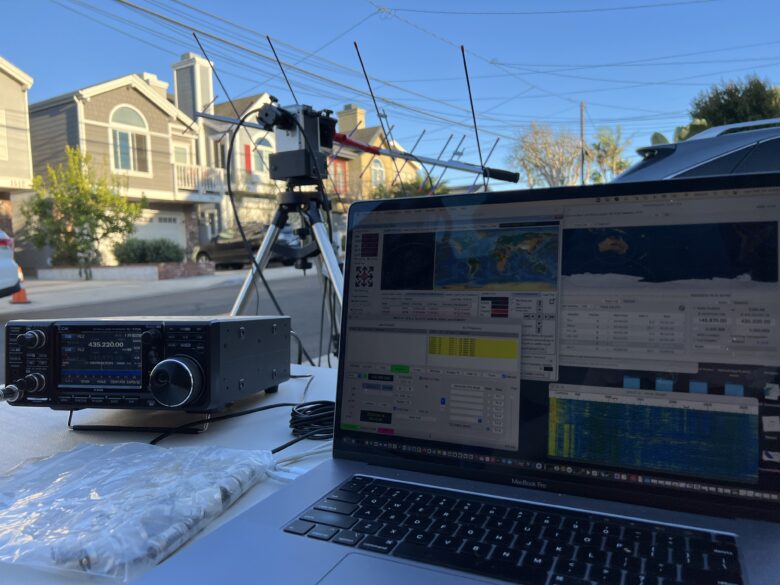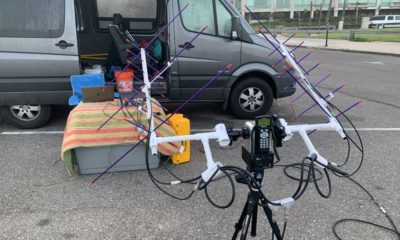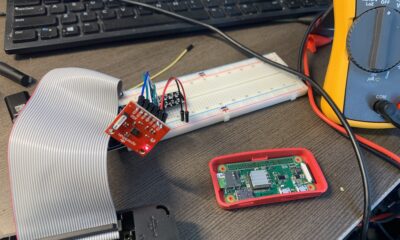Satellite Tracking Using Astronomy Goto Mount – Part 2
For the longest time I have been operating with MacDoppler providing VFO control and either python or node-red taking a UDP stream from MacDoppler for rotator control to send slew commands to my iOptron telescope mount every second. My initial experiences using a Goto mount are detailed here: https://www.beyondcli.com/ham/satellite-tracking-using-astronomy-goto-mount/
It has been working well but it just got a little better…
SkyTrack from https://www.heavenscape.com provides computer control of goto mounts for astronomical objects and satellites. Using this software, you can schedule a viewing of satellites as they pass overhead illuminated by the sun.
A really nice update was made to SkyTrack to allow “Continuous Motion” for a select group of Goto mounts and fortunately my mount is included…
From an astronomy perspective, it does not make much sense to view eclipsed satellites so there are numerous options in the the SkyTrack software to ignore eclipsed satellites. For amateur radio enthusiasts, eclipsed satellites are just fine so when using this software, some tweaks are needed to ensure the software ignores eclipsed satellites and continues to track if a satellite becomes eclipsed as we are tracking it.
Setup is as follows:
SkyTrack is loaded with Amsat TLE’s via a simple download as follows:
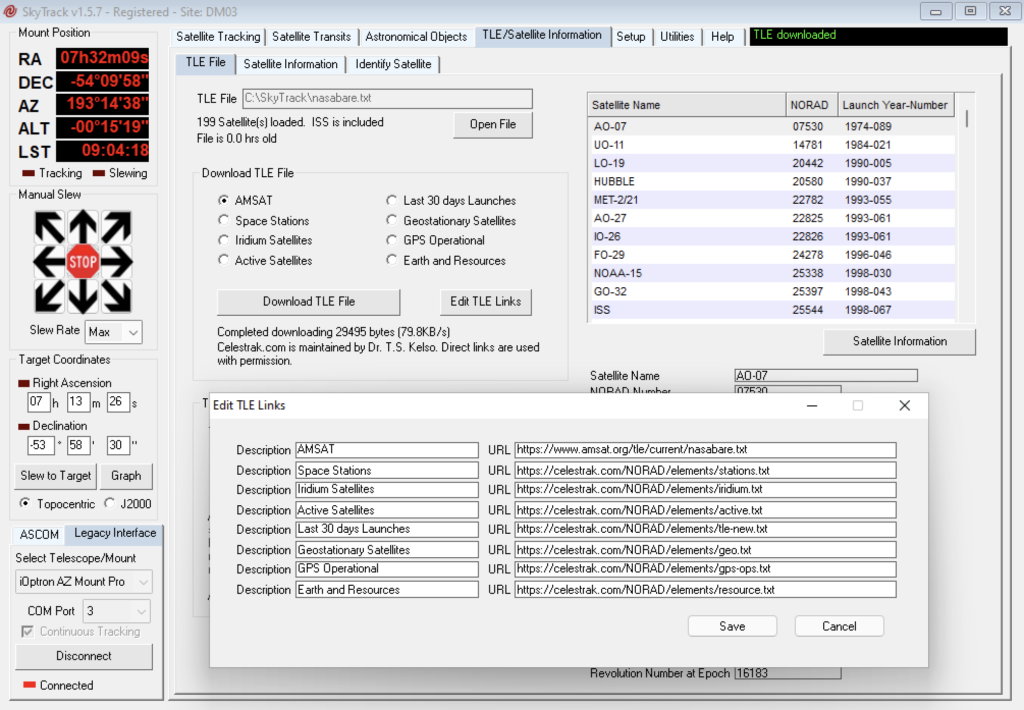
Once Satellite TLE’s are loaded, on the Satellite Tracking tab:
- Connect to the Goto mount via a serial port.
- On the Current Visible Satellite Tab, ensure option Include Eclipsed is Checked.
- On the Current and Upcoming Satellite Pass Tab, Ensure option Exclude Day Time Passes is unchecked.
- Under the Satellite Data, ensure option Stop Tracking when Satellite is Eclipsed is unchecked.
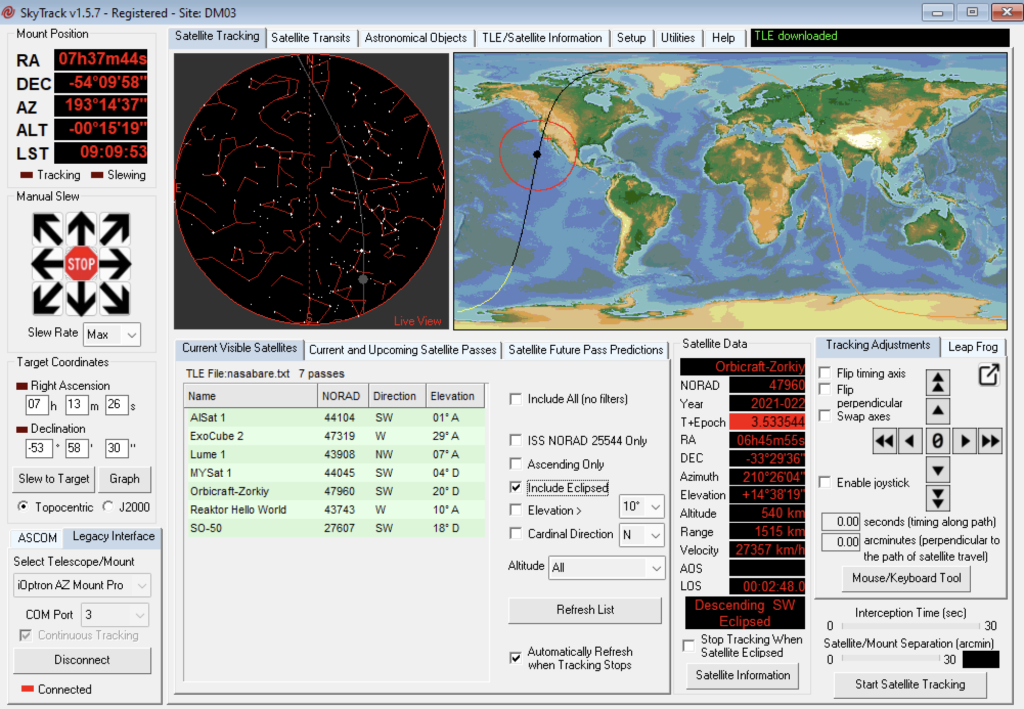
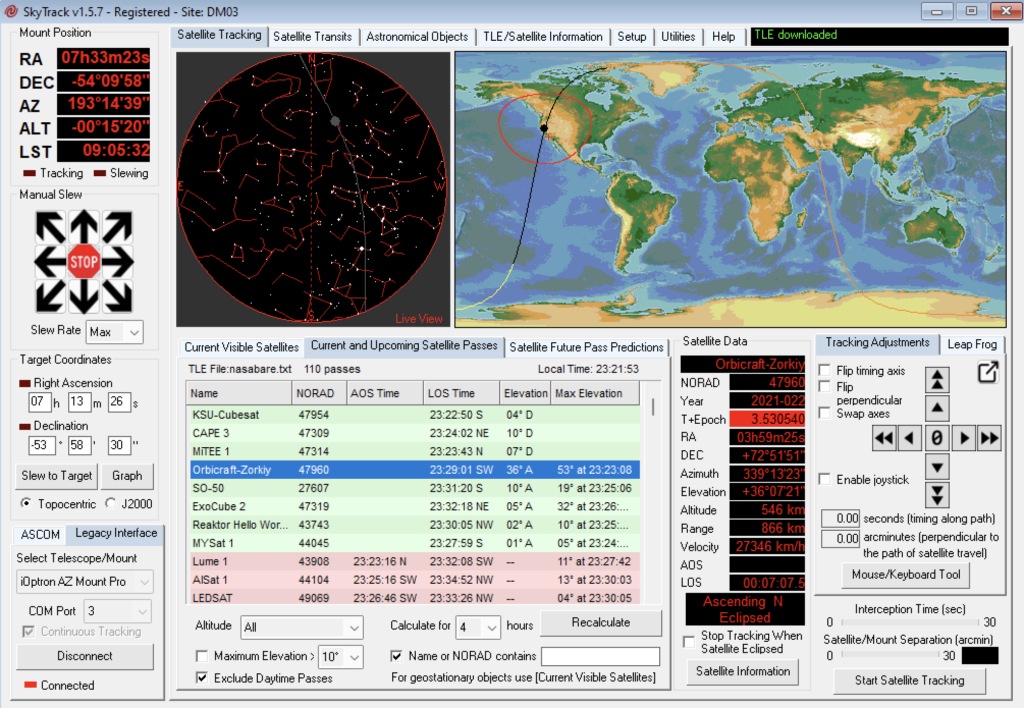
When the satellite comes over the horizon, Click on the Start Satellite Tracking, and the mount will now track the satellite in a fluid motion AOS to LOS… It is pretty cool to see in action.
My portable hardware includes the iOptron AZ Mount Pro with an Alaskan Arrow, Icom IC-9700, and my Mac computer. Software includes MacDoppler (MacOS), SkyTrack (Windows 11), and WSJT-X (MacOS) for FT4 QSO’s on Linear satellites. I have the choice of running SatPC for VFO control but I will continue with MacDoppler for now.
Adding WSJT-X to the mix was a little painful as I came up to speed with the IC-9700’s IO port capabilities so that WSJT-X would drive PTT and MacDoppler would drive the VFO’s. It was not too much of a hassle as two com ports are presented by the 9700 I guess for this purpose so one for WSJT-X and the other for MacDoppler…
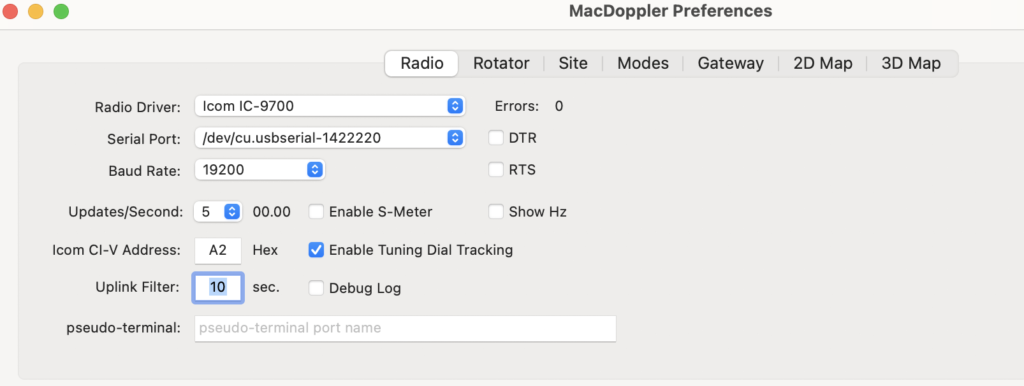

My first time trying this setup was a little frustrating as I needed to get up to speed on how to best operate. I took the time to set everything up inside the house which allowed me to get more familiar with configuration and operation.
Overall, my experience with SkyTrack has been very positive, and even if your telescope mount does not support Continuous Tracking, more than likely it does have ASCOM support and SkyTrack will do a great job of keeping an antenna pointing at a satellite but with 1-2 seconds “jumps”.
The following is a screenshot SkyTrack legacy interfaces and I believe most of these support continuous motion:
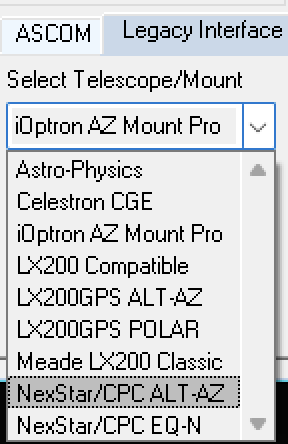
A quick video showing the interaction between SkyTrack software and the iOptron AZ Mount Pro tracking a random satellite:
As a next step, I am going to see if I can “dump” the serial cable and replace with a RS232-WIFI connection.
Stepping back, Goto telescope mounts can be a little pricy but if you already have one, you can put its to good use as a portable satellite tracking mount for a small antenna.
73 de AB6A Dwayne Sinclair

